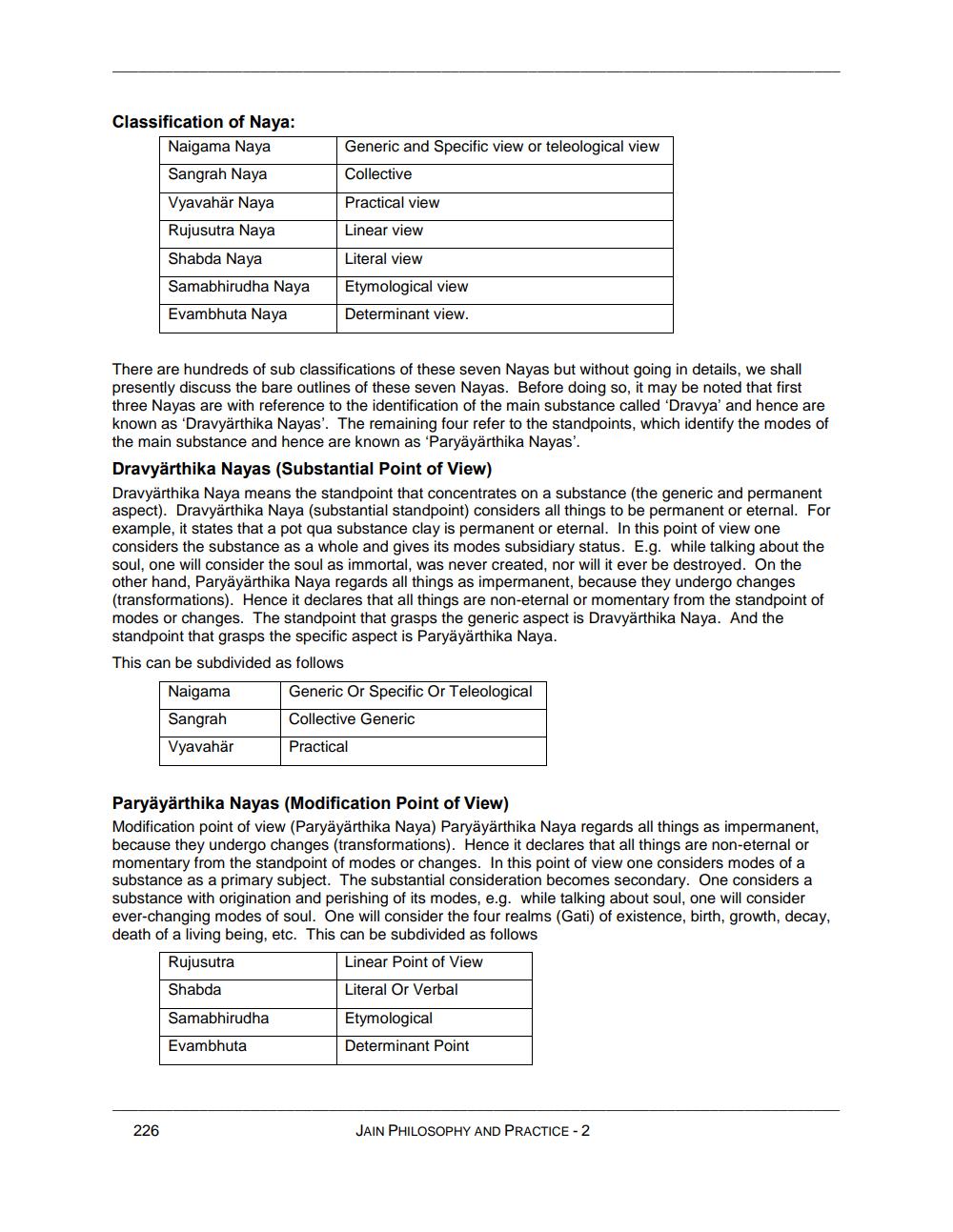________________
Classification of Naya:
Naigama Naya
Sangrah Naya
Vyavahär Naya
Rujusutra Naya
Shabda Naya
Samabhirudha Naya
Evambhuta Naya
226
There are hundreds of sub classifications of these seven Nayas but without going in details, we shall presently discuss the bare outlines of these seven Nayas. Before doing so, it may be noted that first three Nayas are with reference to the identification of the main substance called 'Dravya' and hence are known as 'Dravyärthika Nayas'. The remaining four refer to the standpoints, which identify the modes of the main substance and hence are known as 'Paryäyärthika Nayas'.
Dravyarthika Nayas (Substantial Point of View)
Dravyärthika Naya means the standpoint that concentrates on a substance (the generic and permanent aspect). Dravyärthika Naya (substantial standpoint) considers all things to be permanent or eternal. For example, it states that a pot qua substance clay is permanent or eternal. In this point of view one considers the substance as a whole and gives its modes subsidiary status. E.g. while talking about the soul, one will consider the soul as immortal, was never created, nor will it ever be destroyed. On the other hand, Paryäyärthika Naya regards all things as impermanent, because they undergo changes (transformations). Hence it declares that all things are non-eternal or momentary from the standpoint of modes or changes. The standpoint that grasps the generic aspect is Dravyärthika Naya. And the standpoint that grasps the specific aspect is Paryäyärthika Naya.
This can be subdivided as follows
Naigama Sangrah
Vyavahär
Generic and Specific view or teleological view
Collective
Practical view
Linear view
Literal view
Etymological view
Determinant view.
Samabhirudha
Evambhuta
Paryäyärthika Nayas (Modification Point of View)
Modification point of view (Paryäyärthika Naya) Paryäyärthika Naya regards all things as impermanent, because they undergo changes (transformations). Hence it declares that all things are non-eternal or momentary from the standpoint of modes or changes. In this point of view one considers modes of a substance as a primary subject. The substantial consideration becomes secondary. One considers a substance with origination and perishing of its modes, e.g. while talking about soul, one will consider ever-changing modes of soul. One will consider the four realms (Gati) of existence, birth, growth, decay, death of a living being, etc. This can be subdivided as follows
Rujusutra
Shabda
Generic Or Specific Or Teleological Collective Generic
Practical
Linear Point of View
Literal Or Verbal
Etymological
Determinant Point
JAIN PHILOSOPHY AND PRACTICE - 2




